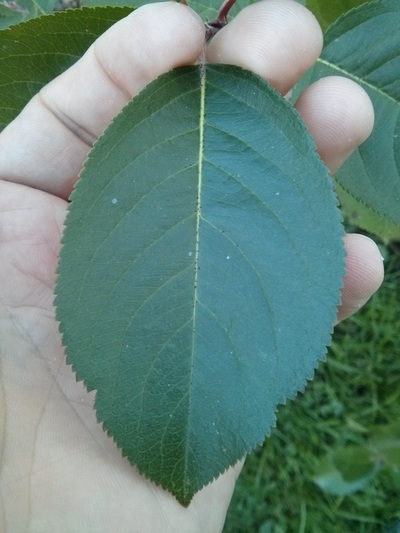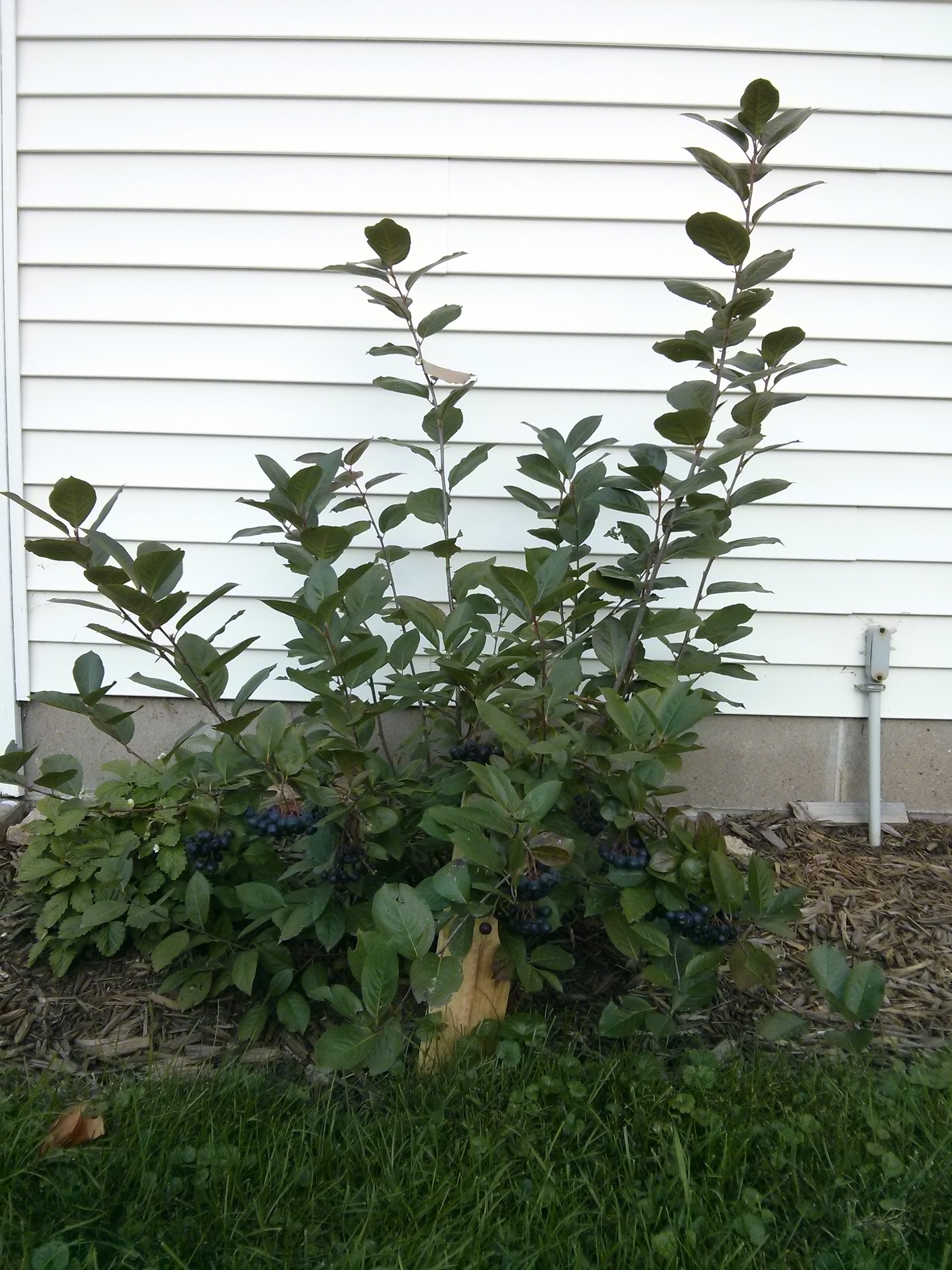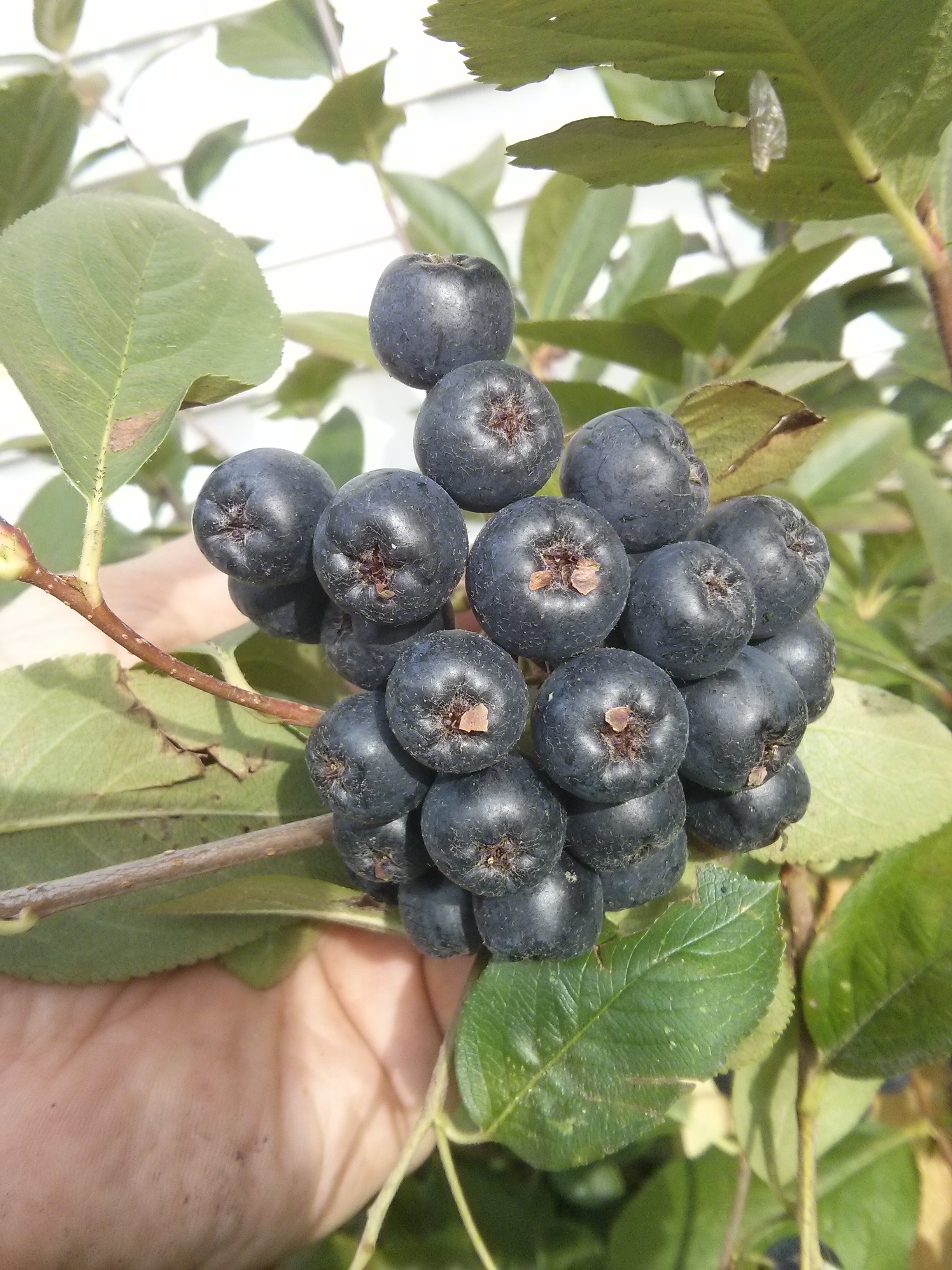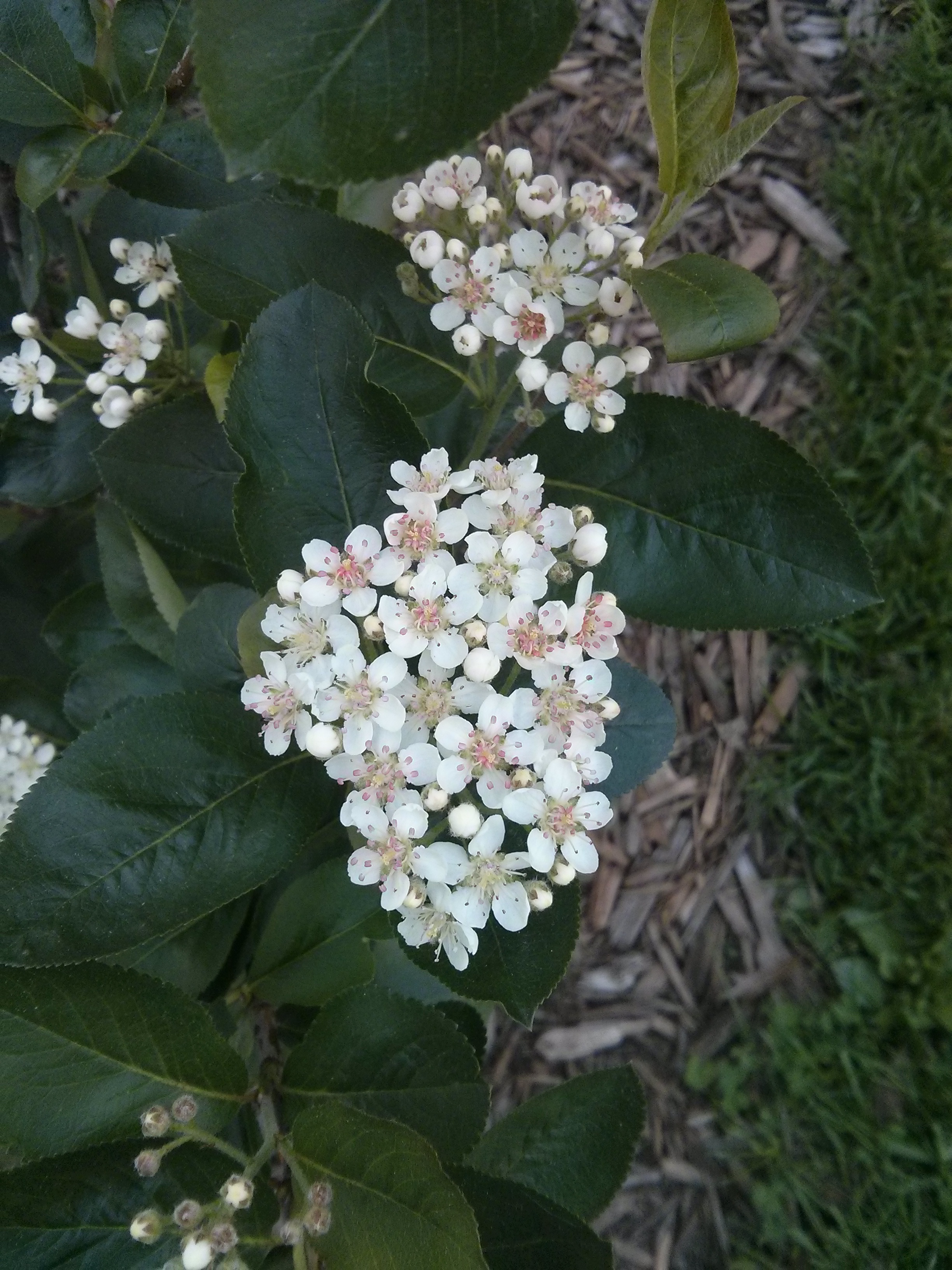Common Name: Black Chokeberry, Aronia
Scientific Name:
Family: Rosaceae
Genus: Aronia
Species: melanocarpa
Hardiness Zone: 3 to 8
Height: 3 to 6 ft
Width: 3 to 6 ft
Common Characteristics:
Black chokeberry, Aronia melanocarpa, is a shrub with berries known for its sour flavor and high antioxidant content. The shrub generally grows between 4 and 8 feet tall at maturity (Brand). The twigs are slender, brown, and smooth. Leaves are dark green, 1-3” long, and almond-shaped, with the base of the leaf being slightly narrower and longer than the portion closest to the tip of the leaf. The leaf edges are jagged. Both the leaves and stem lack any pubescence which can help differentiate it from some of its near relatives such as red chokeberry and purple chokeberry, which both exhibit varying degrees of pubescence (Brand). Black chokeberry has white and pink flowers with five petals that can be seen emerging during the spring. The species is monoecious with bisexual or perfect flowers. The fruit is dark purple to black in color, about the size of a blueberry, and hangs in clusters on a small stalk. The fruit begins to form in the late summer and will ripen into the fall.
Where it Grows:
Black chokeberry can be found growing naturally in a variety of conditions; swamps, bogs, lowland woods, along with bodies of water, moist rocky seeps, savannas, sand dunes, dry rocky slopes, dry bluffs, and grasslands (Brand). Prefers full sun. Planting in partial shade is tolerated by the plant, but fruit production will be negatively affected.
How it's Used:
It can be planted as shrub borders or in small gardens. In urban areas, it serves as a good alternative to other non-native species that may become invasive. Plants will sucker and spread clonally but tend not to be too aggressive (Brand). Prune unwanted suckers to control size. Berries from the shrub can be used for wine, juice, tea, and natural dietary supplements.
Ecosystem Services:
The berries are great for wildlife, serving as a source of food for birds. The flowers in the spring attract butterflies and other insect pollinators.
Where it is Native To:
The plant is native to the northeastern and Great Lakes region of the United States and can also be found in the Appalachian Mountains at higher elevations (Brand).
Known Varieties and Their Traits:
-
Glossy Black Chokeberry - (Aronia melanocarpa var. elata): 5 to 7 feet high and 4 to 6 feet wide. The glossy green foliage turns bright red and purple in the autumn. White flowers bloom in May.
- Iroquois Beauty™ (Aronia melanocarpa ‘Morton’ ): 2 to 3 feet high and 4 to 5 feet wide. Iroquois Beauty™ was selected at The Morton Arboretum and introduced by Chicagoland Grows® Introduction Program.
Problems:
There are no serious diseases or insect problems. Has some susceptibility to leaf spots and leaf/fruit blight.
Other Details:
The antioxidant properties of the plant are due to the production of various polyphenolic compounds, such as cyanidin anthocyanins which affect the color of the berries (Taheri et al.). Aronia will start to produce up to two pounds of fruit per plant 2 years after planting, with incremental increases in yield until it levels in year 5 or 6. By this time, the yield is approximately 15 to 20 pounds per plant; however, yields are also determined by plant spacing and the amount of light each plant receives. Europe reports higher yields, averaging 23 pounds per plant (AgMRC).
References:
Brand M. (2010) Aronia: Native Shrubs With Untapped Potential. Arnoldia vol. 67 number 3.
Taheri R, Connolly B, Brand M, Bolling B. (2013) Underutilized Chokeberry (Aronia melanocarpa, Aronia arbutifolia, Aronia prunifolia) Accessions Are Rich Sources of Anthocyanins, Flavonoids, Hydroxycinnamic Acids, and Proanthocyanidins. Journal of Agricultural and Food Chemistry vol. 61(36), pp. 8581-8.



